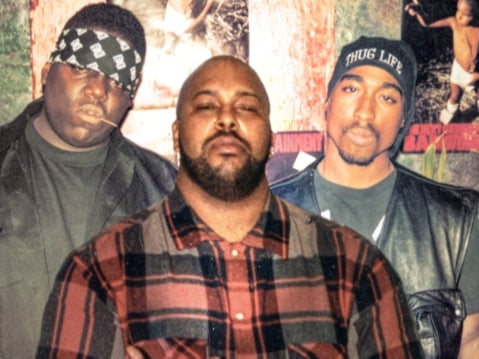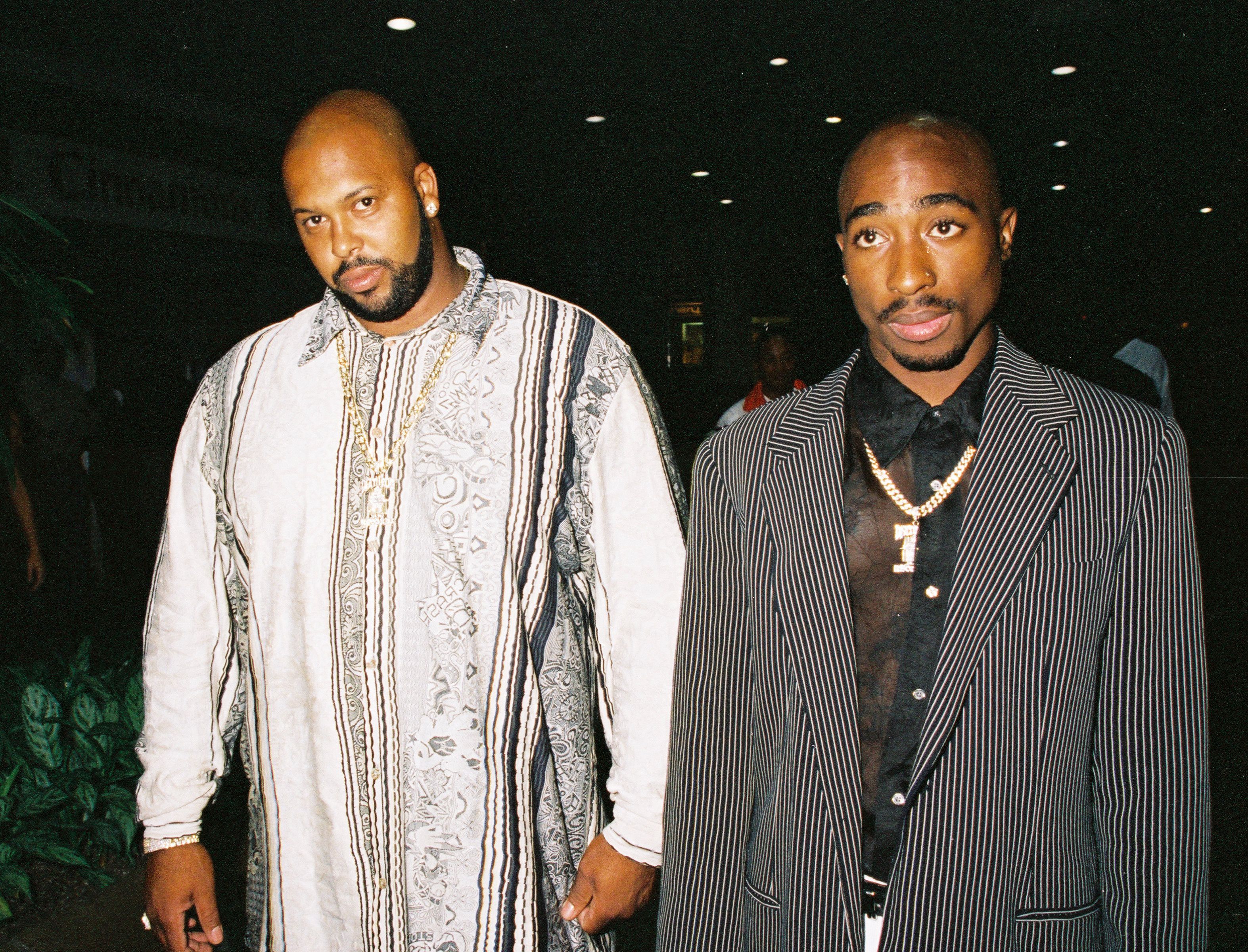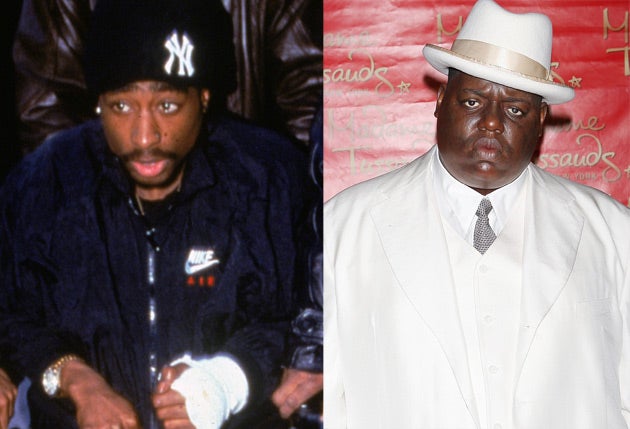Rap beefs, gang fights and dirty cops: who really killed Tupac and Biggie?
The drive-by murders of rappers Biggie and Tupac have gone unsolved for over 20 years, but a new documentary uncovers further evidence. Kevin E G Perry talks to filmmakers Nick Broomfield and Pam Brooks about their incendiary film, Last Man Standing


Your support helps us to tell the story
From reproductive rights to climate change to Big Tech, The Independent is on the ground when the story is developing. Whether it's investigating the financials of Elon Musk's pro-Trump PAC or producing our latest documentary, 'The A Word', which shines a light on the American women fighting for reproductive rights, we know how important it is to parse out the facts from the messaging.
At such a critical moment in US history, we need reporters on the ground. Your donation allows us to keep sending journalists to speak to both sides of the story.
The Independent is trusted by Americans across the entire political spectrum. And unlike many other quality news outlets, we choose not to lock Americans out of our reporting and analysis with paywalls. We believe quality journalism should be available to everyone, paid for by those who can afford it.
Your support makes all the difference.In October 2018, former Death Row Records boss Suge Knight was sentenced to 28 years in prison for running over and killing music executive Terry Carter. Documentarian Nick Broomfield’s 2002 film Biggie & Tupac alleged that Knight was complicit in the deaths of Tupac Shakur and Christopher “Notorious BIG” Wallace, rival rap icons who were shot in mysterious drive-bys within six months of each other in the mid-Nineties. But Knight’s lengthy incarceration presented an opportunity to uncover new evidence that even decades on could help shed light on the pair of intriguing and high-profile unsolved murders.
“People are much more prepared to talk now,” says Broomfield, speaking over a video call. “Now that Suge Knight’s behind bars, a lot of people are coming forward that were, frankly, frightened of getting killed before.”
Broomfield says further motivation to make new documentary Last Man Standing: Suge Knight and the Murders of Biggie & Tupac came from his desire to continue the work of the late LAPD detective Russell Poole, whose investigation into Wallace’s murder led him to believe that corrupt LAPD officers had been involved. Poole died of a heart attack in 2015 during a meeting at the Los Angeles County Sheriff’s Department, where he was still arguing his case. That same year a documentary, Murder Rap – based on a book by another former LAPD officer, Greg Kading – set out an alternative narrative that cleared the police of any involvement.
“I felt Russell Poole had been really shafted,” says Broomfield. “He had a tragic ending, and then this bulls*** programme came out. I was horrified when I saw the film. I felt it was belittling the work of Poole, and it made these ridiculous allegations that the LAPD were completely innocent and that this guy called Poochie had done the hit. The hit on Biggie was not a gang hit. Through complete annoyance, and out of loyalty to Poole, I decided to do this film.”
It’s fair to say there’s no love lost between Broomfield and Kading. When I speak to the retired detective, who is interviewed in Last Man Standing, he says he now regrets his involvement in Broomfield’s documentary and accuses the director of being “intellectually dishonest”. “He’s not interested in facts and evidence,” argues Kading. “He’s interested in patching together a narrative that is not only reckless and irresponsible, but it falsely accuses innocent people of murder.”
Broomfield has never worried about stirring up controversy with his films (and they have, from his 1996 doc about Hollywood madam Heidi Fleiss to his 1988 film on Kurt Cobain and Courtney Love), but he makes clear he never misled Kading about his intentions. While he disagrees with the detective’s conclusions, he felt they were important to include. “I wanted to get his theory from the horse’s mouth, as it were,” says Broomfield.
Despite their differing opinions on Wallace’s murder, both Broomfield and Kading agree on the circumstances surrounding Shakur’s death. This much is known for certain: on 7 September 1996, Shakur and Knight watched from the crowd at the MGM Grand in Las Vegas as Mike Tyson knocked out Bruce Seldon in just one minute and 49 seconds. As they left the fight, Travon Lane, an associate of Knight’s and a member of the Blood-affiliated MOB Pirus gang, spotted Orlando Anderson of the rival Southside Crips gang. Earlier that year, Anderson had attempted to rob Lane. When Lane told Shakur this, the rapper took it upon himself to approach Anderson and punch him in the face. The ensuing fight, which was captured on CCTV, saw Knight and his associates join Shakur in beating and kicking Anderson.
Later that evening, as Shakur and Knight drove to Knight’s Club 662, a white Cadillac pulled alongside their car. A passenger in the back of the Cadillac opened fire with a Glock 22, hitting Shakur four times. He died in hospital six days later, at the age of 25.
The fact that nobody has ever been charged in relation to the shooting has allowed various contradictory theories to flourish. In Biggie & Tupac, Broomfield presented Poole’s hypothesis that Knight may have orchestrated the hit himself because he owed Shakur $10m in royalties and couldn’t pay. Another theory held that Sean “Puffy” Combs, head of Death Row’s East Coast rivals Bad Boy Records, to which Wallace was signed, arranged the shooting and that Knight had also been an intended target.
Enjoy unlimited access to 100 million ad-free songs and podcasts with Amazon Music
Sign up now for a 30-day free trial
Enjoy unlimited access to 100 million ad-free songs and podcasts with Amazon Music
Sign up now for a 30-day free trial

What now seems most likely is that Shakur’s death was simply a direct reprisal for the fight at the MGM Grand earlier in the evening. In 2008, Kading carried out a sting operation on Keefe D, a Southside Crips gang boss and Orlando Anderson’s uncle. As part of a plea deal, Keefe D admitted to being in the white Cadillac that night and implicated Anderson as the shooter (Anderson was himself killed in a gang shooting in 1998).
While Broomfield now accepts that Poole’s theory about Knight having Shakur killed was wrong, Last Man Standing producer Pam Brooks argues that Knight still carries some moral responsibility for the death of his biggest star. Brooks is a Compton local who was a central figure in Broomfield’s 2014 serial killer documentary Tales of the Grim Sleeper, and was instrumental in connecting the filmmaker with gang members who’d never previously spoken about the murders. She says Knight, who immersed Death Row in the mentality of the MOB Pirus, surrounded himself with gang members and brought Shakur into that world, should have known what to expect.
Suge knew there was gonna be retaliation. He did that
“When Pac hit that boy, Suge should have told Pac to step down,” she says. “He should’ve been like: ‘Go over and apologise to that ni**a because this ain’t even your beef; what you doing?’ Maybe things would have went a different way. You can’t hit nobody and think there’s not gonna be some retaliation. Suge Knight isn’t a gangbanger, but he lived in a gangbanger world. He knew there was gonna be retaliation. He did that.”
The identity of Christopher “Biggie” Wallace’s murderer is much more contentious. Six months after Shakur’s death, in the early hours of 9 March 1997, Wallace was leaving a party at the Petersen Automotive Museum in Los Angeles when he too was shot four times by an unidentified assailant. The killer drove a Chevrolet Impala and used a 9mm pistol, firing precisely in a way that suggested a professional hitman. Wallace was pronounced dead within hours at the Cedars-Sinai Medical Centre, at the age of 24.
Kading’s explanation is that Wallace’s murder was arranged by Knight as vengeance for the death of Shakur. He claims Knight hired MOB Piru member Wardell “Poochie” Fouse to carry out the shooting, basing his accusation on the word of one of Knight’s girlfriends, known only by the pseudonym “Theresa Swann” (Fouse was shot dead while riding his motorbike through Compton in 2003).
“I don’t believe his theory for a second,” says Broomfield, who doesn’t find Swann’s testimony authentic. “She has a long history of false names and false testimonies. She’s a completely uncredible witness, in Greg Kading’s own words, so that’s why his theory has never been tested in court. He didn’t really have a witness so that’s not a sustainable theory, but I think it was enough to put Voletta Wallace off from pursuing her case.”
But the plot thickens. In 1997, Wallace’s mother Voletta, along with his widow Faith Evans, filed a wrongful death suit against the LAPD asking for what they estimated would have been the rapper’s lifetime earnings: $500 million. They based their claim on Poole’s investigations, which implicated the police in the murder. Kading only began investigating Wallace’s murder in 2006, when the LAPD reopened the case in response to the suit.
“His job was to come up with a theory that was going to get the LAPD off the hook for a $500 million lawsuit, which he did rather effectively,” claims Broomfield. “But just because he came up with a very plausible theory about Tupac doesn’t give any credibility to his paper-thin hotchpotch of a theory about Biggie, which is actually the crucial one. Of course Tupac’s murder is a tragedy, but the Biggie killing raises enormous alarm bells about institutional corruption, the malfunctioning of justice and an overt cover up on the part of the LAPD.”

In Last Man Standing, Broomfield makes the case that Knight arranged Wallace’s murder through the LAPD officers he employed while they were off-duty as Death Row security. The officers at the centre of the plot are named as David Mack and Rafael Pérez, both of whom were involved in the LAPD’s Rampart scandal, which uncovered widespread corruption in the police’s gang unit. In 1997, Mack was convicted of stealing $722,000 in an armed bank robbery, while in 1998 Pérez was arrested for stealing $800,000 worth of cocaine from a police evidence room.
Kading claims there is no evidence Mack and Pérez were among the LAPD officers who worked at Death Row, but in Last Man Standing Broomfield finds plenty of new witnesses willing to say otherwise. “Even the Police Chief at the time, with no prodding from me, said that they worked for Death Row,” points out Broomfield. “Everybody who worked at Death Row immediately said: ‘Oh, Rafael Pérez? Yeah, sure, we used to go pick up women together. They were here all the time!’”
With most of the major players now either dead or serving lengthy prison sentences, it seems unlikely that the true circumstances of Shakur and Wallace’s murders will ever be conclusively proved in court. That won’t stop people looking for answers. “It’s about closure, basically,” says Brooks. “The police is so wicked and that seems like it’s not gonna change. It was really crucial how Suge Knight crewed up with the LAPD, and that just shows you how lowlife they are for a little bit of change. They make good money, but it just shows you how it’s about control. It’s all about control.”
Fierce arguments over the murders of Shakur and Wallace will continue as long as they have fans who want to understand how their heroes came to such violent ends at such young ages. “Pac’s birthday was a few days ago and everybody was on Instagram and on Facebook talking about him, because he was the man,” says Brooks. “He made good music. It’s just sad that his life ended tragically on some bulls***.”
‘Last Man Standing: Suge Knight and the Murders of Biggie & Tupac’ premieres in cinemas on Wednesday 30 June, followed by a Q&A with Nick Broomfield hosted by Trevor Nelson. Tickets available from lastmanstanding.film. The film goes on general release in select cinemas from Friday 2 July.
This article was amended on 29 December 2021. It originally said that Shakur was shot on September 13 1996, but this was incorrect. He was shot on September 7 1996 and succumbed to his injuries six days later, on 13 September.



Join our commenting forum
Join thought-provoking conversations, follow other Independent readers and see their replies
Comments